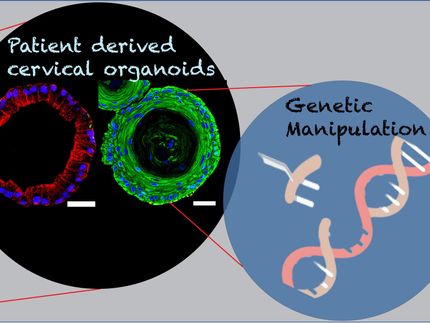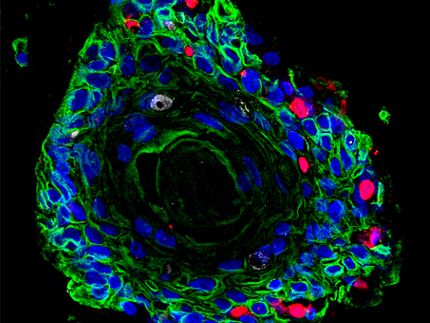By decoding how HPV causes cancer, researchers find a new potential treatment strategy
A study that teases apart the biological mechanisms by which human papillomaviruses (HPV) cause cancer has found what researchers at Georgetown University Medical Center say is a new strategy that might provide targeted treatment for these cancers.
HPV is responsible for the majority of cervical cancer and a substantial portion of head and neck and anal cancers, but therapy available to date is surgery and non-specific chemotherapy.
The new study found that E6, an oncoprotein produced by the virus, interacts with several other molecules in host cells in a manner that ensures infected cells cannot die. If they are immortal and continue to multiply, cancer develops.
"There is no targeted treatment now for these cancers since German virologist Harald zur Hausen, PhD, discovered in 1983 that HPV can cause cervical cancer. Recently, the numbers of HPV-linked head and neck cancers have increased in the U.S. Now we have a chance to develop and test a very specific, potentially less toxic way to stop these cancers," says the study's lead author, Xuefeng Liu, MD, associate professor of pathology at Georgetown University Medical Center. Liu is director of Telomeres and Cell Immortalization for the medical center's Center for Cell Reprogramming .
Liu and his team have previously found that the HPV E6 oncoprotein interferes with the well-known p53 tumor suppressor to increase telomerase activity that extends the life span of infected cells. A telomerase is a protein that allows a cell to divide indefinitely when it would have stopped after a certain number of divisions.
In this study, researchers found that E6 also interacts with myc, a protein produced by the Myc gene, which controls gene expression in all healthy cells. They concluded that telomerase activity is dependent on E6-myc proteins hooking on to each other.
This means, says Liu, that designing a small molecule that stops E6 from joining up with myc should shut down persistent activation of telomerase. A small molecule could bind to E6 in the same spot that myc would, or bind on to myc in the same spot that E6 would, thus preventing an E6-myc complex.
"This small molecule would not be toxic to all normal cells or, importantly, to master stem cells, because myc would not be affected," says Liu. "It could be a unique treatment, targeted specifically to HPV cancers."
Georgetown researchers are now working on a prototype chemical to interfere with E6/Myc binding.
Original publication
Aleksandra Dakic, Kyle DiVito, Shuang Fang, Frank Suprynowicz, Anirudh Gaur, Xin Li, Nancy Palechor-Ceron, Vera Simic, Sujata Choudhury, Songtao Yu, Cynthia M. Simbulan-Rosenthal, Dean Rosenthal, Richard Schlegel, Xuefeng Liu; "ROCK inhibitor reduces Myc-induced apoptosis and mediates immortalization of human keratinocytes"; Oncotarget; 2017
Most read news
Original publication
Aleksandra Dakic, Kyle DiVito, Shuang Fang, Frank Suprynowicz, Anirudh Gaur, Xin Li, Nancy Palechor-Ceron, Vera Simic, Sujata Choudhury, Songtao Yu, Cynthia M. Simbulan-Rosenthal, Dean Rosenthal, Richard Schlegel, Xuefeng Liu; "ROCK inhibitor reduces Myc-induced apoptosis and mediates immortalization of human keratinocytes"; Oncotarget; 2017
Topics
Organizations
Other news from the department science

Get the life science industry in your inbox
By submitting this form you agree that LUMITOS AG will send you the newsletter(s) selected above by email. Your data will not be passed on to third parties. Your data will be stored and processed in accordance with our data protection regulations. LUMITOS may contact you by email for the purpose of advertising or market and opinion surveys. You can revoke your consent at any time without giving reasons to LUMITOS AG, Ernst-Augustin-Str. 2, 12489 Berlin, Germany or by e-mail at revoke@lumitos.com with effect for the future. In addition, each email contains a link to unsubscribe from the corresponding newsletter.






















































